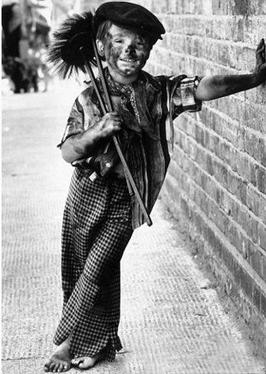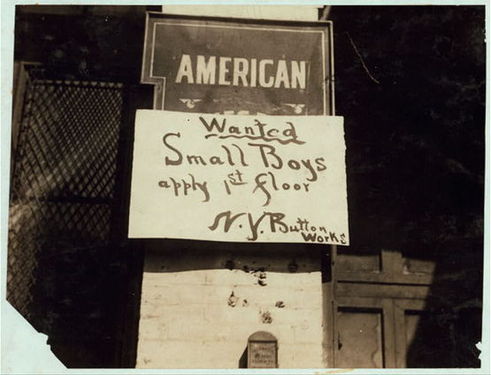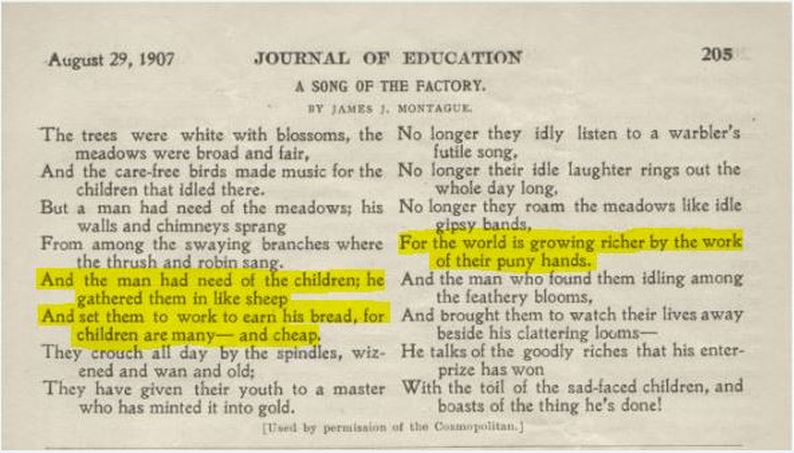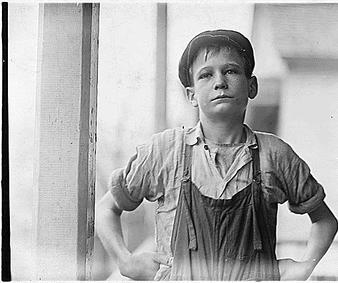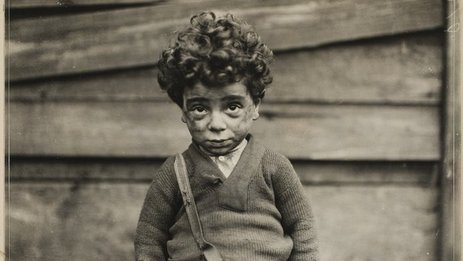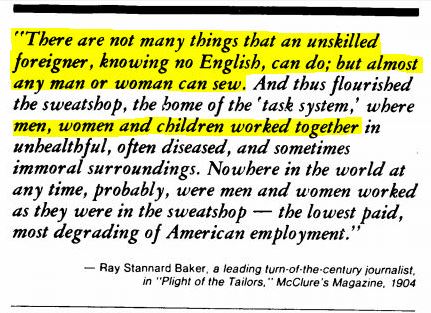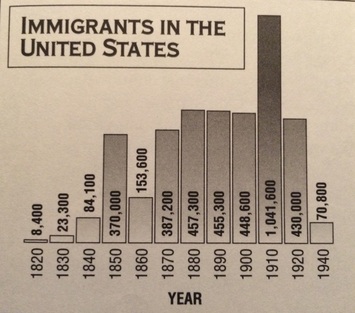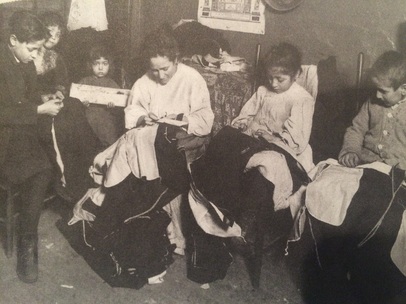Background
Why Hire Children?
The rise of industrial America contributed to the growth of cities and factories and created the need for additional employees.
"The industrial revolution ushered in the modern factory system and changed a predominately rural populace into an urban one. Factory towns grew up dependent on a labor supply of women and children, the children working not necessarily as apprentices but as factory labor" -Report on the Youth Labor Force, Bureau of Labor Statistics [2000]
"Rapidly growing cities meant more slums, filled by the numbers of immigrants...and provided a never ending supply of cheap labor for the giant firms that made a few Americans very rich." |
Children could be paid lower wages, and were more tractable than adults. Their small size allowed them to move and work in compact spaces, especially in factories or mines.
"When the economic Panic of 1893 swept across the country, many workers lost their jobs. At some factories, grown men were replaced by children who were paid lower wages"
-Russell Freedman, Author of Kids at Work: Lewis Hine and the Crusade Against Child Labor [1994]
“Philadelphian mansions were built on the broken bones, the quivering ears and drooping heads of these children" Most child factory workers earned only $2.50 for each sixty-five hour week.
|
The Family Economy
Sending children into the labor market was an essential survival strategy and a means of coping with the threat of poverty for many working-class Americans.
"Among families with working children, children’s earnings accounted for an average of 23 percent of total family income"
-Department of Labor survey [1917-19]
|
One investigator of working class life reported:
"Father thinks no advantage will be gained from longer attendance at school, so children will be put to work as soon as able" -Volume 6 of the Massachusetts Annual Report on the Statistics of Labor, 1875 |
Child labor was linked to a father's income, which was dependent on skill, ethnic background, and occupation.
"The rate [of children working] among foreign-born children exceeded that of their counterparts born in the U.S. – by about 9 percentage points among males and 16 percentage points among females." These differences are attributed to the higher earnings levels of white and native-born families.
|
The enormous number of people needed to run sweatshops was provided primarily by immigrant women and children.
"Many immigrants settled in major cities along the Atlantic seaboard or along major waterways. By 1870, the population of New York City was growing by fifty percent every ten years" -Susan Campbell Bartoletti [1999]
For millions of immigrants, the only jobs available to them were in sweatshops.
"[For these new arrivals] the sweatshop was America" -Labor organizer Joseph Schlossberg [n.d.]
|
A seventeen year old Russian sweatshop worker reported:
“My father saved enough money to bring mother and me to America. He came here first and worked to save money; but the long hours and poor food made him a nervous wreck, and then mother and me had to support him. Then mother broke down altogether and I had to support them both” [n.d.] |
The lack of regulation during the industrial revolution allowed for the oppressive practice of child labor to expand into the twentieth century. Until the founding of the National Child Labor Committee, no successful steps were taken to put an end to child labor.
|
Thesis:
The leadership of the National Child Labor Committee piloted the social reform movement against the exploitation of children. By harnessing the power of propaganda to influence public opinion, the NCLC changed society’s perception, thus allowing for the passage of national legislation prohibiting the labor of children. The legacy of the NCLC lies not only in ending child labor, but also in establishing a precedent for future federal regulation of labor. |
Niharika Boinpally and Divya Pakianathan
Senior Group Website Word Count (Student Composed): 1166 Process Paper Word Count: 484 |

